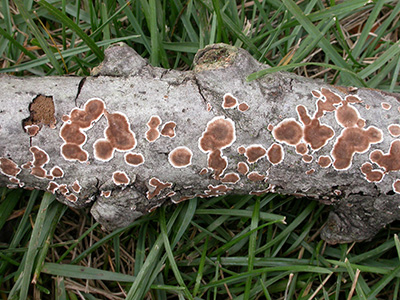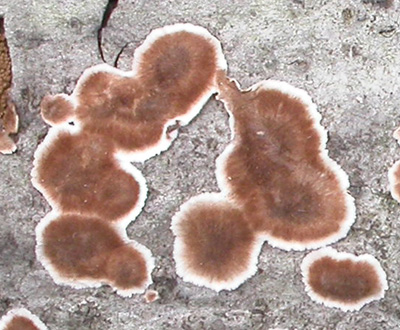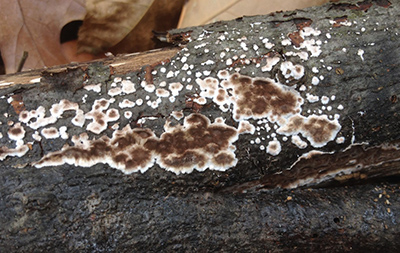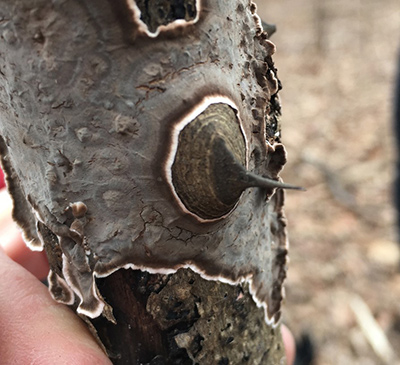Peniophora albobadia
Scientific name: Peniophora albobadia (Schweinitz) Boidin
Derivation of name: albo-refers to white and badi- means
reddish-brown, the epithet accurately describing the vivid
contrast between the fertile area and the margin.
Synonyms: Stereum albobadium (Schweinitz) Fr.;
Thelephora albobadia Schweinitz.
Common name(s): Giraffe spots
Phylum: Basidiomycota
Order: Russulales
Family: Peniophoraceae
Occurrence on wood substrate: Saprobic; forming
spreading crusts on the bark of decaying twigs and fallen
branches of many hardwood species;
year-round.
Dimensions: The individual fruit bodies typically join with
neighboring fruit bodies resulting in spreading crusts many
centimeters
in size.
Description: In young and mature specimens, the brown to
reddish-brown
fertile areas offer a striking contrast to the
white or pale-colored margins. The color contrast between
margin and fertile area diminishes
with age.
The fruit bodies
are typically resupinate but in some specimens, the
margins are
reflexed.
Comments: Most resupinate species are difficult to identify
with certainty using just macroscopic features. Giraffe spots
is one
of the exceptions.

Figure 1. Peniophora albobadia on a fallen branch.
Photo © Gary Emberger.

Figure 2.
The only common name I'm aware of for this fungus is
"giraffe spots." This amusing and very appropriate name was
coined by a member of the New York Mycological
Society, based
on specimens found during surveys of the boroughs of NYC.
Photo © Gary Emberger.

Figure 3.
Peniophora albobadia fruit bodies on a fallen branch.
The fungus fruits on the surface of the bark.
Photo © Ethan Crenson.

Figure 4. Growth of Peniophora albobadia surrounding a thorn
of Sichuan pepper-corn tree (Zanthoxylum simulans).
Photo © Ethan Crenson.